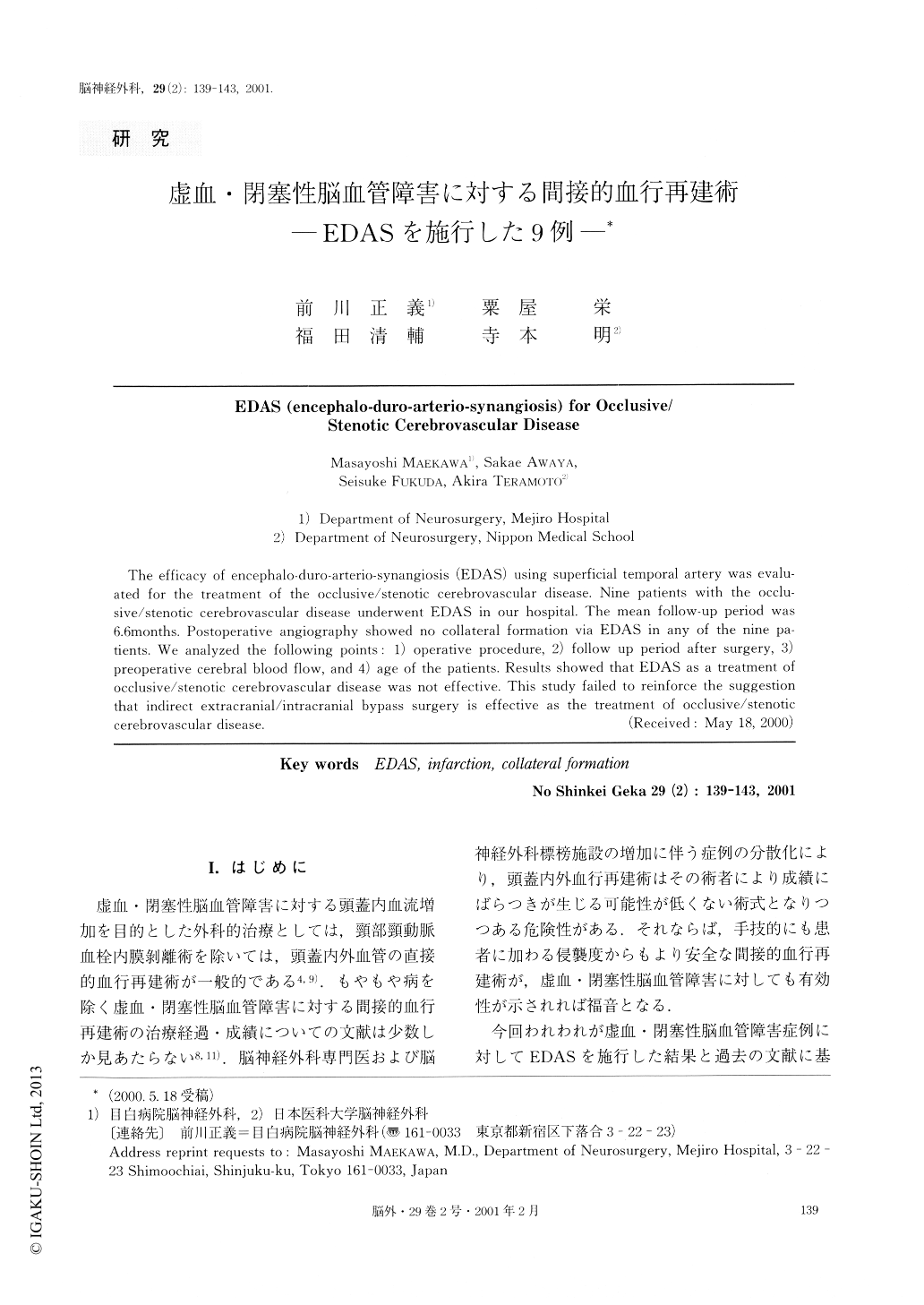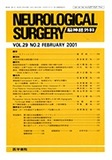Japanese
English
- 有料閲覧
- Abstract 文献概要
- 1ページ目 Look Inside
I.はじめに
虚血・閉塞性脳血管障害に対する頭蓋内血流増加を目的とした外科的治療としては,頸部頸動脈血栓内膜剥離術を除いては,頭蓋内外血管の直接的血行再建術が一般的である4,9).もやもや病を除く虚血・閉塞性脳血管障害に対する間接的血行再建術の治療経過・成績についての文献は少数しか見あたらない8,11).脳神経外科専門医および脳神経外科標榜施設の増加に伴う症例の分散化により,頭蓋内外血行再建術はその術者により成績にばらつきが生じる可能性が低くない術式となりつつある危険性がある.それならば,手技的にも患者に加わる侵襲度からもより安全な間接的血行再建術が,虚血・閉塞性脳血管障害に対しても有効性が示されれば福音となる.
今回われわれが虚血・閉塞性脳血管障害症例に対してEDASを施行した結果と過去の文献に基づき,虚血・閉塞性脳血管障害に対する間接的血行再建術の適応および有効性の有無を検証することを目的とした.
The efficacy of encephalo-duro-arterio-synangiosis (EDAS) using superficial temporal artery was evalu-ated for the treatment of the occlusive/stenotic cerebrovascular disease. Nine patients with the occlu-sive/stenotic cerebrovascular disease underwent EDAS in our hospital. The mean follow-up period was6.6months. Postoperative angiography showed no collateral formation via EDAS in any of the nine pa-tients. We analyzed the following points: 1) operative procedure, 2) follow up period after surgery, 3)preoperative cerebral blood flow, and 4) age of the patients. Results showed that EDAS as a treatment ofocclusive/stenotic cerebrovascular disease was not effective. This study failed to reinforce the suggestionthat indirect extracranial/intracranial bypass surgery is effective as the treatment of occlusive/stenoticcerebrovascular disease.

Copyright © 2001, Igaku-Shoin Ltd. All rights reserved.


